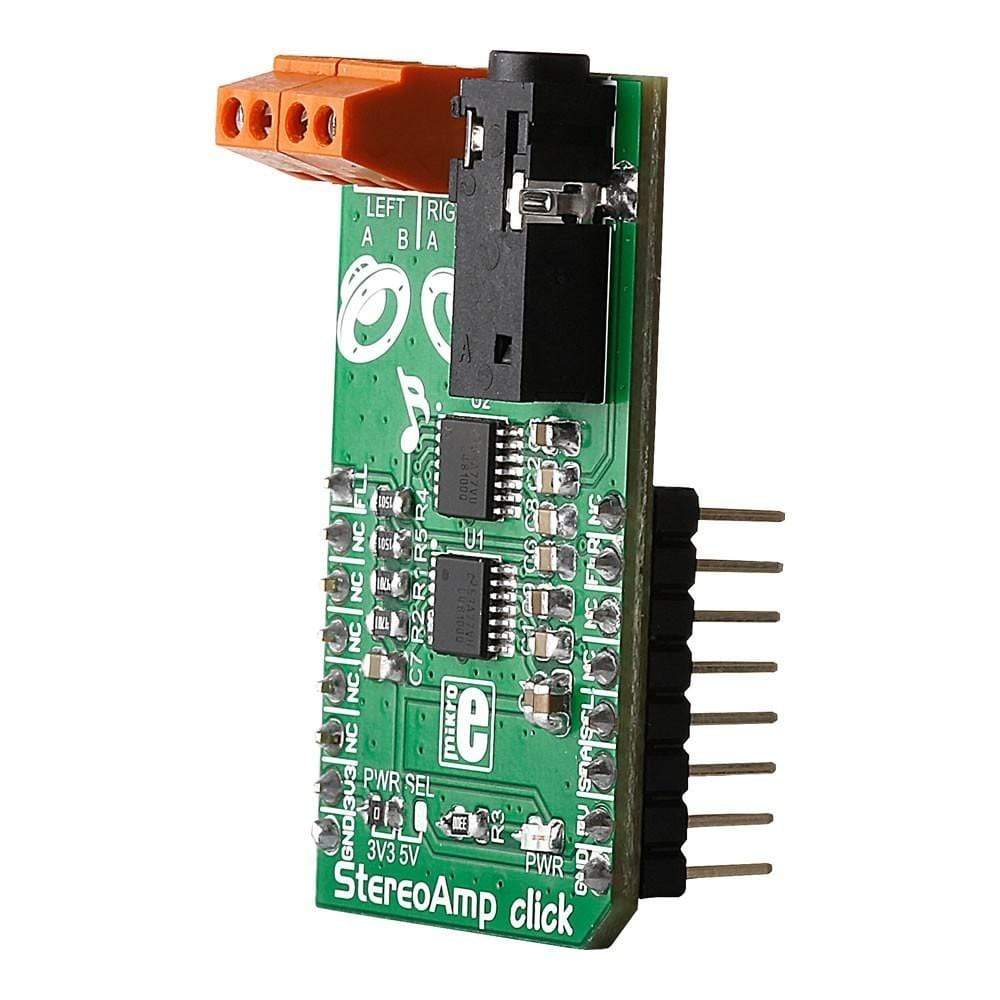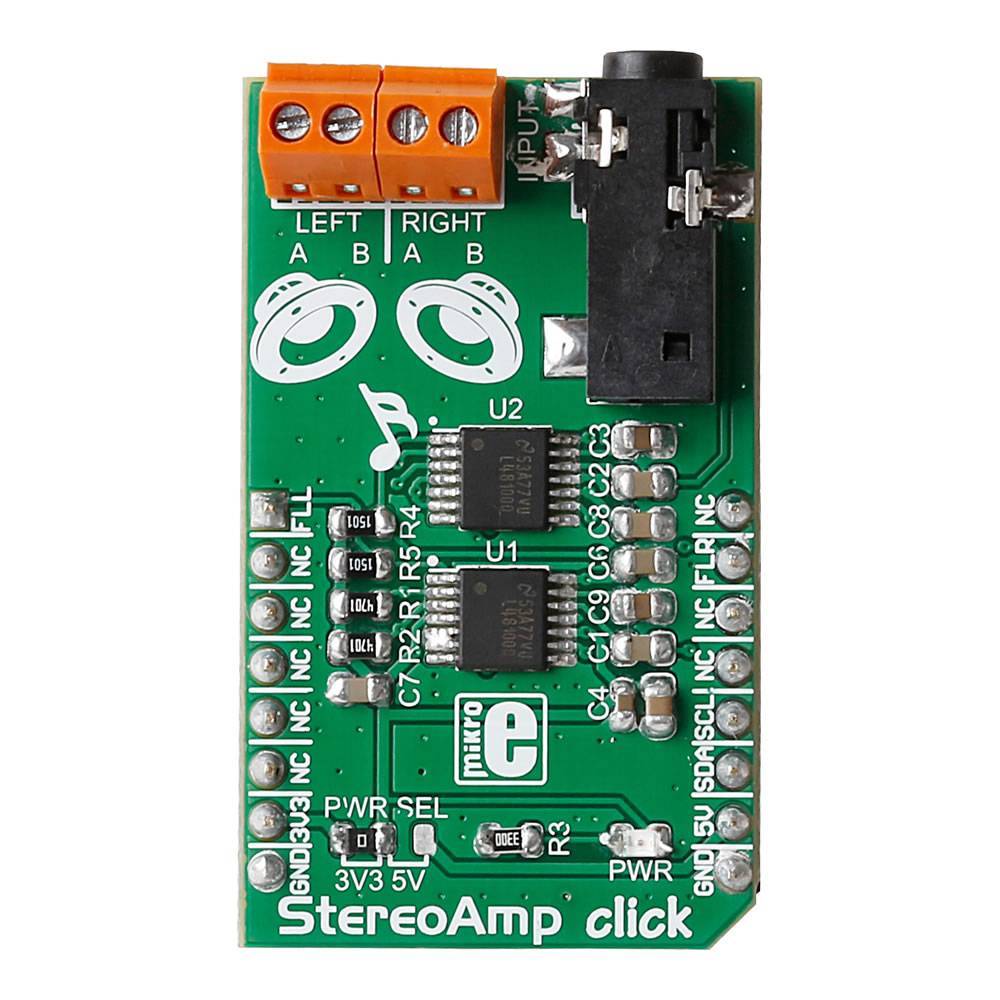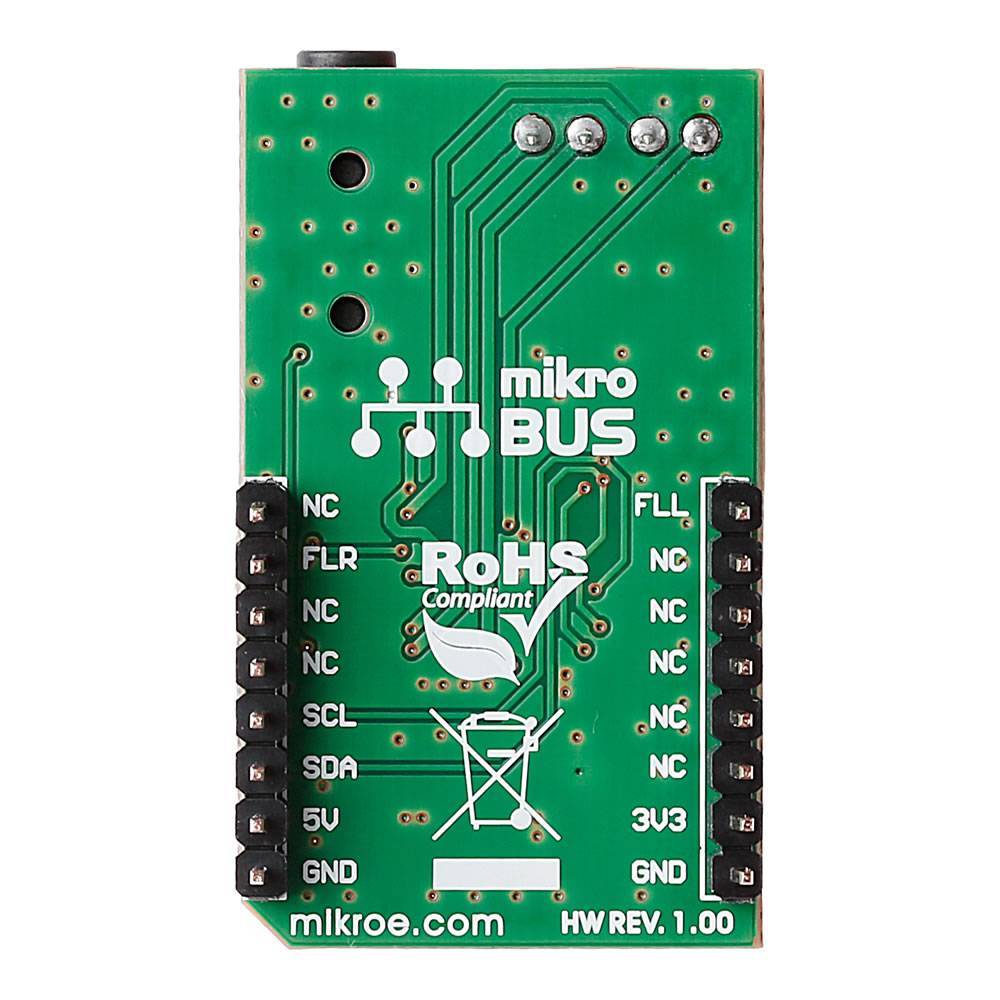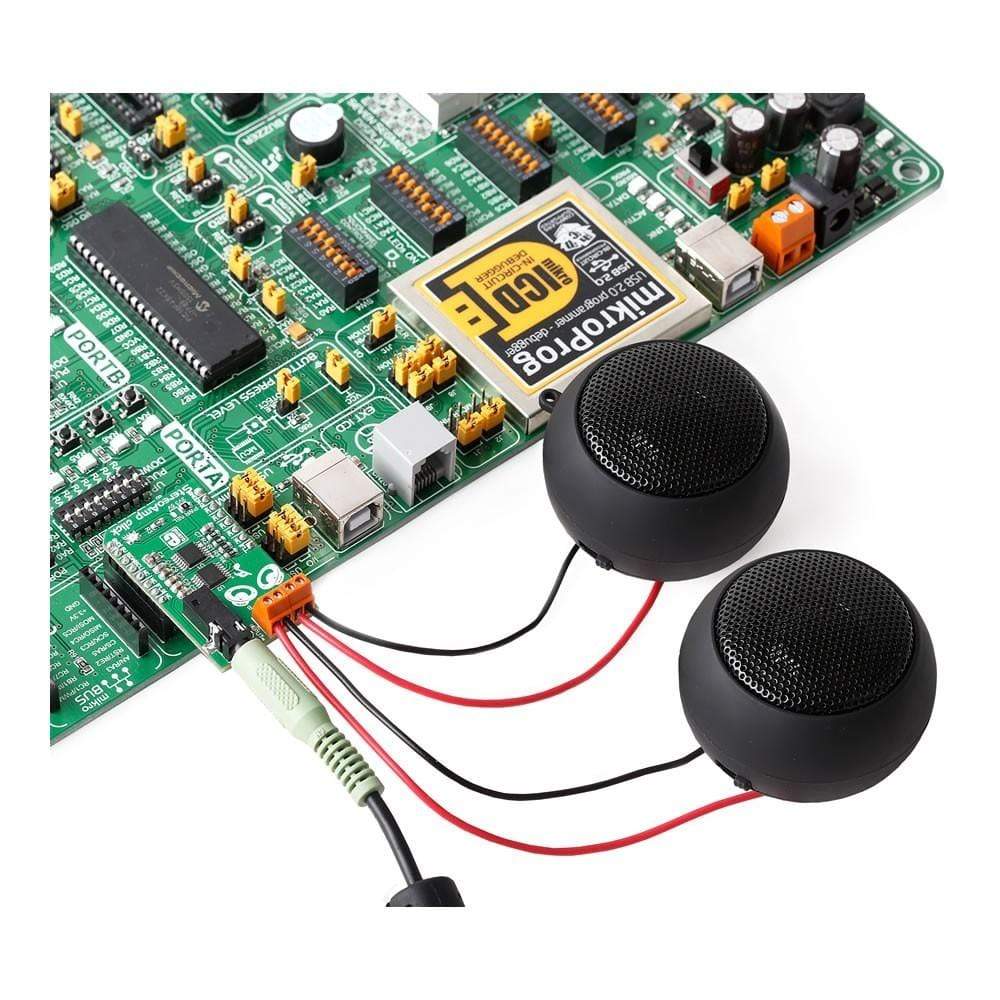



Overview
The StereoAmp Click Board™ functions as a stereo amplifier and is ideal for battery operated devices or as a lab amplifier.
It features two LM48100Q-Q1 Boomer single supply, mono, bridge-tied load amplifier ICs by Texas Instruments. The LM48100Q-Q1 has output fault detection and I2C volume control.
Downloads
Le StereoAmp Click Board™ fonctionne comme un amplificateur stéréo et est idéal pour les appareils fonctionnant sur batterie ou comme amplificateur de laboratoire.
Il est équipé de deux circuits intégrés d'amplificateur de charge mono à alimentation simple Boomer LM48100Q-Q1 de Texas Instruments. Le LM48100Q-Q1 dispose d'une détection de défaut de sortie et d'un contrôle de volume I2C.
| General Information | |
|---|---|
Part Number (SKU) |
MIKROE-2454
|
Manufacturer |
|
| Physical and Mechanical | |
Weight |
0.02 kg
|
| Other | |
Country of Origin |
|
HS Code Customs Tariff code
|
|
EAN |
8606015079318
|
Warranty |
|
Frequently Asked Questions
Have a Question?
Be the first to ask a question about this.




